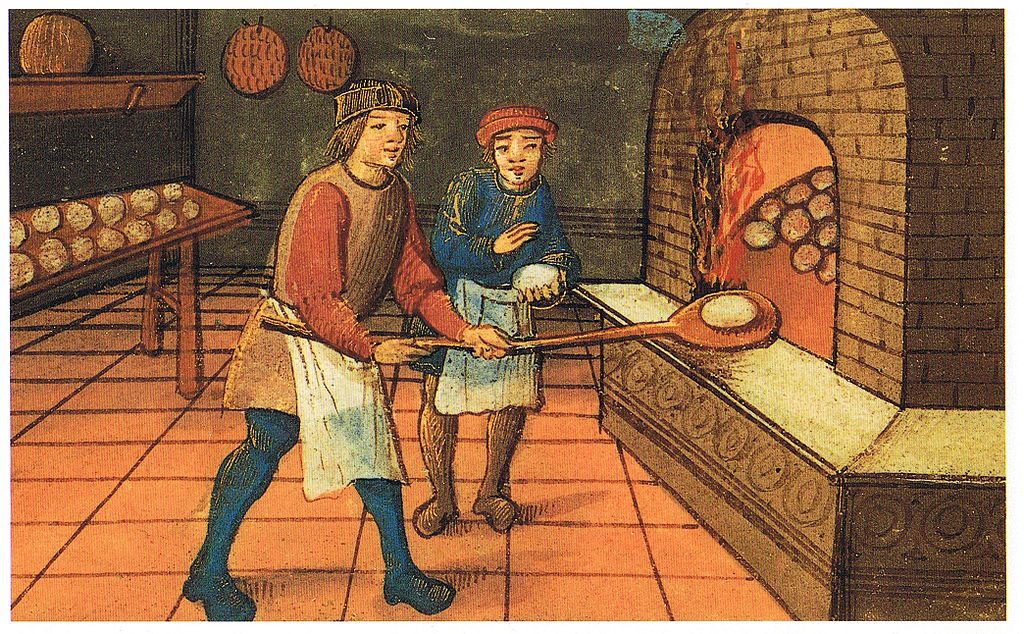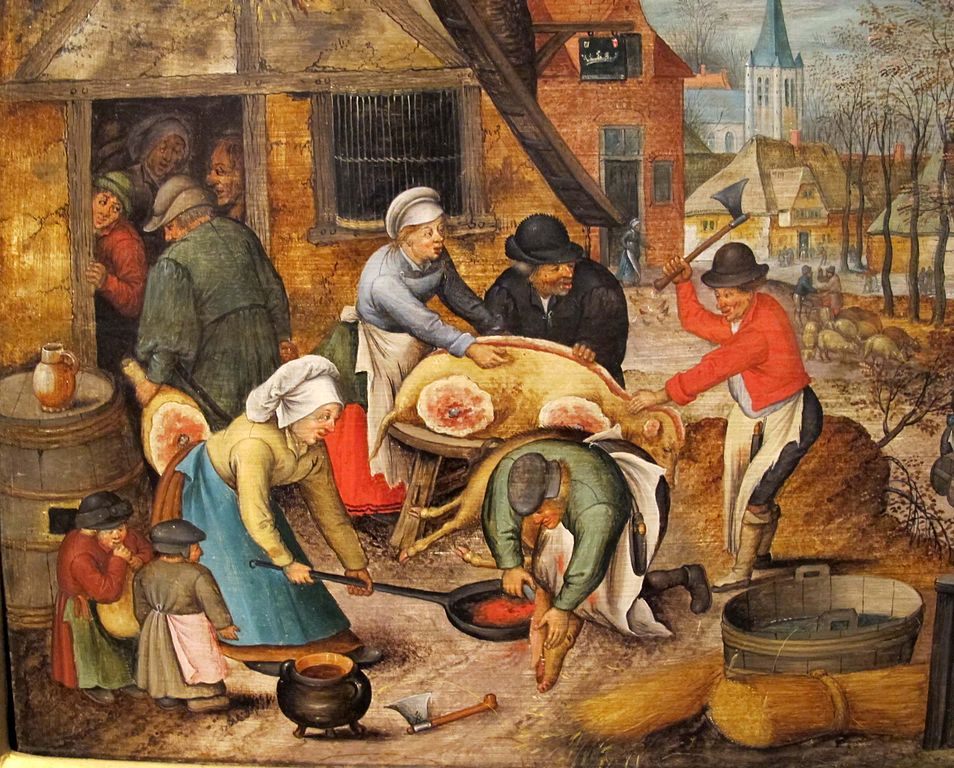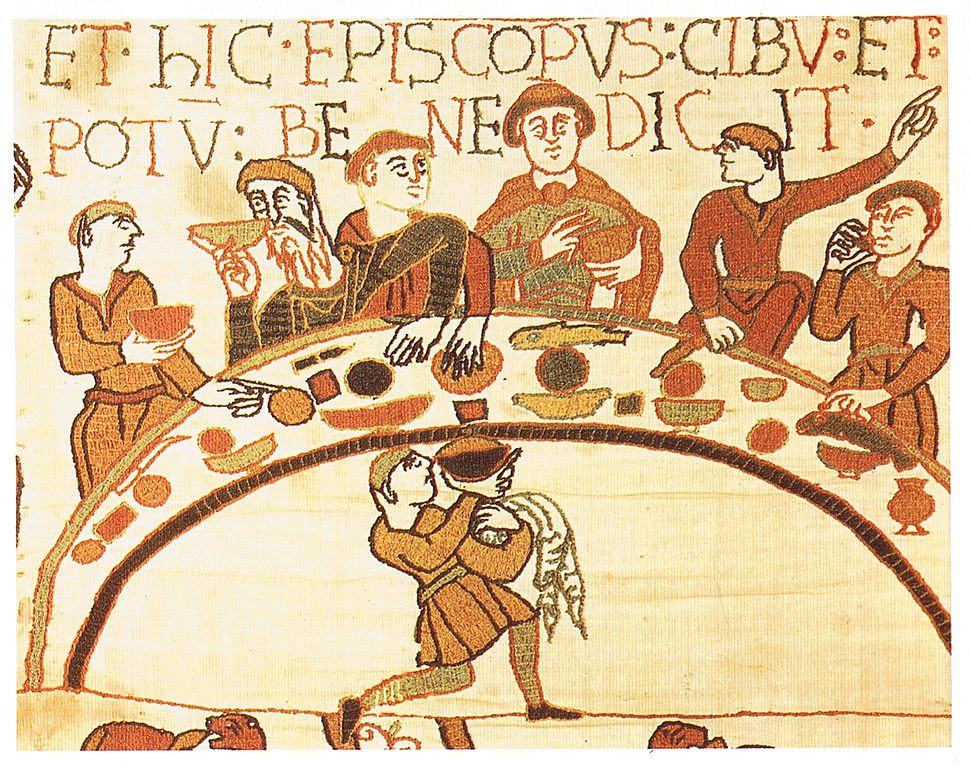I Tried a Medieval Diet, and I Didn’t Even Get That Drunk
The Regimen Sanitatus Salernum was the Middle Ages’ most famous health manual. How does it hold up?
It can seem sometimes like all diet advice boils down to the same basic ideas. Eat vegetables and healthy proteins, avoid processed snack food, and hydrate, hydrate, hydrate.
This was not, however, the case in medieval times.
The Regimen Sanitatis Salernitanum was created, allegedly, by famous doctors for English royalty and disseminated in the form of a poem. It recommends, very specifically, red wine, fresh eggs, figs and grapes. It has little to say about vegetables. In many ways, it’s the antithesis of today’s health fads—it celebrates wheat, emphasizes meat, and involves two significant meals, with no mention of snacking. Water is looked on with suspicion, and juice is nowhere to be found.
But from the 1200s through the 1800s, the Regimen was one of the most well known guides to health in Europe, at a time when the stakes of staying healthy were much higher than they are now. Getting sick could be a death sentence; this regimen promised to keep people well.
Could we be ignoring some great advice? Is water really all that? I decided to test the Regimen Sanitatis Salernitanum out myself. For a week and a half, I followed, to the best of my ability, the advice of the doctors of Salerno. I drank diluted wine at dinner and sometimes at lunch; I ate bread at almost every meal; I sought out richly stewed meat whenever I could. The regimen was not just about what to eat, though, and I also followed its prescriptions for daily life.
I felt like I was living the Game of Thrones life; some days, I felt I was living like a 13th century king. Despite the amount of wine I was consuming, I never got drunk! In fact, I felt great.
The Rules
The Salerno health regimen was based in the humoral theory of medicine, which is focused on keeping balance among the body’s four humours—blood, phlegm, yellow bile and black bile. Foods were thought to possess qualities that could help maintain that balance: each hot or cool, dry or moist. These ideas originated in the ancient Mediterranean world, most prominently with the Greek physician Galen, and were passed to doctors in the Arab world, before returning to Europe.
Although medieval doctors legitimized their recommendations with these ideas about how the body worked, their medical advice wasn’t as random as it might seem. “They justified their practice by humours, but they had arrived at these ideas by trial and error,” says Noga Arikha, the author of Passions and Tempers, a history of the humours. These doctors had one major disadvantage compared to modern doctors—they didn’t know about germs, so they didn’t know what caused sickness. But their ideas about how to keep healthy, particularly by controlling a person’s diet, weren’t so different from our ideas today. “The idea of balancing out—that remains and it makes complete sense,” says Arikha.

The Regimen’s top line advice is simple and sensible. Don’t get stressed out—let go of “heavy cares” and “refrain from anger.” Don’t eat too much; don’t take afternoon naps. Don’t drink too much undiluted wine. To stay healthy, you just need “a joyful mind, rest, and a moderate diet.”
The advice isn’t always so clear, though. One 17th century commentary goes through each line of the poem and explains its intention. Why eat moderately, for instance? “Eating and drinking excessively causes us to be unlusty, drowsy and slothful, hurting and enfeebling the stomach.” What’s the advantage of white wine? “White wine makes you piss better than any other wine.”
There are a few specifically recommended foods, though: fresh eggs, red wine, and rich gravies or broths. Fresh figs and grapes are good; apples, pears, and peaches less so, as they are “melancholic,” the humour associated with black bile. Wheat and all sorts of meat are “nourishing and fattening.” Fresh cheese is also “nourishing,” but aged cheese is out: it’s “cold, constipating, crude and hard.”
The Regimen’s advice on vegetables is practical: garlic and radish are antidotes to poison, cabbage broth has laxative properties, and turnips cause both gas and urine. Peas, though, are “rather good.”

The selection of vegetables in medieval Europe was relatively small, to begin with. It would not have included plants native to North or South America, which means no potatos, no corn, no tomatoes, no avocados, no peppers, and no beans (with the exception of fava beans). Spinach came from Persia, via Arab conquests of southern Europe, in the 800s, and gradually replaced other greens, like sorrel. Sugar first reached Europe in 1148, when Crusaders brought it back from their war, but it was a luxury product, with limited availability, for centuries. Coffee didn’t come regularly until the 17th century (a historical fact which I had to ignore).
The poem has other advice to offer, but most of it is less prescriptive or is targeted to specific ailments. There is a whole section on bleeding—in the spring, blood should be taken from veins on the right side of the body. That, I will straight up ignore, because I want to believe that modern medicine has really truly proven that arbitrarily letting blood out of your body doesn’t do much. It’s not that we’re so much smarter about how we cleanse our insides, but compared to a blood-letting, a juice cleanse or enema looks tame.
Day 1
I wake up in the morning, and start with Salerno’s steps for the morning routine. First, I wash my hands and face with cold water. I comb my hair and brush my teeth. I spend some time stretching. All this is supposed to “relax my brain.” Is my brain relaxed? I don’t know, but I am more awake than after my usual routine of spending 20 minutes in bed scrolling through social media.
The greatest success of my first day is lunch: chicken with mushroom sauce, along with bread, grapes, and cheese. Having read too many medieval-influenced fantasy books as a kid, this is basically the simple lunch I have always dreamed of having at a town tavern. Salerno recommends ending the meal with cheese, which feels very civilized, probably because French people never forgot this advice.
Day 2
One of the more mysterious pieces of advice Salerno gives is to wait to eat until the food has left your stomach. How do you know food has left your stomach? You’ll know, is basically what they tell you. “You will be able to know for sure whether you are hungry, by judging your desire for food,” the poem says.

I spend a lot of time wondering: Am I hungry? Do I desire food now? Google informs me that it takes 4 to 5 hours for food to leave the stomach, so when my stomach starts rumbling 2ish hours after my last meal, I wait to eat. And wait, and wait, until I feel less specifically hungry and more lightheaded. Dinner is bread and cheese, which is apparently fine if you’re healthy (and poor).
Day 4
By now, I have figured out how to eat more like a rich person. “Rich gravies,” which I take to mean meaty, saucy stews, are hard to come by in New York today—at least without tomatoes and potatoes. American cuisine has mostly abandoned the idea; the rich gravies we eat are likely to come from Thai or Indian restaurants or Central American spots and to be full of spicy peppers, tomatoes, or potatoes, all of which are off limits. Without cooking for myself, I find the best place to find rich gravies is at hot bars—Whole Foods makes a decent chicken fricassee—or hip bone broth joints.
I get a chance to test the “don’t stress” part of the advice when I find out my car’s been towed. I can’t imagine that the upper class of Europe had to deal with New York Police Department bureaucracy. But probably their horses ran away? It does seem like a much better choice to shrug it off than to stew. I am somewhat successful.
Day 5
One giant difference between diet advice of 1200s and diet advice now is that Salerno never mentions losing weight or keeping skinny. In fact, all the foods Salerno smiles on, the poem describes as “fattening.” When you’re liable as not to face a famine or at least a food shortage at basically any time, fattening is good.

Pork meat, for example, is fattening, although it’s more complicated than that. Here’s what Salerno has to say about pork: “If you eat pork without wine, it is worse than mutton. If you add wine to pork, then it is food and medicine.”
They’re right. My pork stew with red wine is great. I sleep 10 hours. I feel great.
Day 7
I am eating plenty of eggs and gravies. I realize I am not drinking enough red wine.
Day 8
Diluted wine is a revelation. It tastes a lot like a Vitamin water—fruity and sugary, in a cloudy, unspecific way—but alcoholic. Manageably alcoholic. I drank diluted wine for lunch and dinner. I was not drunk. I was not unable to work. I may have been unable to legally drive. I felt a bit light-headed and perhaps a bit less anxious than usual.

French wine-making. (Image: Public domain)
The idea behind diluting wine is a good example of how humoural theory worked in practice. Water is cooling and therefore bad for digestion. Wine is heating and helps digestion along. But it can be too hot. Mix wine and water together, and you have a balanced drink. Conveniently, wine’s antiseptic properties probably made the water safer.
I never managed to drink quite the volume of wine that medieval people are reputed to, but I’m now convinced that most people were not drunk-drunk, just pleasantly buzzed. Considering the percentage of America’s population that’s regularly taking some mood-enhancing drug, we shouldn’t judge medieval people too harshly.
Day 9
For a week and a half, I have been faithfully following Salerno’s morning regime. I have been following the advice to stand or walk around after meals. I have avoided afternoon naps. I have been eating bread, wine, grapes, cheese, and gravies. But there is one part of the medieval regime that I have been shirking.
Back in the Middle Ages, breakfast was not exactly a thing, except for the weak, which included old people, kids, and sick people. Salerno doesn’t say anything explicit about how many meals one should eat. But it does hint that there are only two meals in the day. (“Do not eat a second time until your stomach has been purged.”)
I try it. I really do. It is terrible. By noon, I am light-headed and starving. For lunch, I have bread, cheese, grapes, and chicken stewed with wine, prunes, and olives waiting for me. I have my diluted wine at the ready. But it feels gross to have the first thing I put in my mouth be chicken. I eat too much bread first. I eat the chicken too fast and am suddenly full. And then, it comes—the urge to nap. I fight it. It’s hard. For the first time, I understand exactly why some of the advice in the poem is there.
The Results
There’s a lot to be said for the Salerno regime. The morning routine is refreshing. Because it precludes sugar, many of the worst of our modern vices are eliminated. Because it doesn’t have anything spicy in it—the hottest foods in Europe at the time were mustard, horseradish, and imported black pepper—it’s easy on the stomach. Plus, you get to feel like a medieval lord, which is never a bad thing.
How did it stack up from a modern point of view? I asked Andrea Grandson, a nutritional therapist who specializes in metabolic health, to go over the Salerno prescriptions with me. “It sounds very healthy, with eggs, wine, and broth,” she says. Eggs are a complete protein and one of the easiest to digest. Red wine is valuable for its resveratrol and antioxidants. Broths and stews extract the nutrients from the bones and organs of animals. “They were on the right track in terms of looking for nutrient density,” she says.
But, most importantly, she said, how did I feel? Was I sleeping ok? Did I feel an afternoon slump?
The truth is, I felt great eating this food. It was simple, hearty, and filling, but I never stuffed myself. I would recommend keeping breakfast. And snacks. And coffee. But, otherwise, maybe eating like a medieval king could be a great way to stay healthy.
Special thanks to Arlene Shaner at the New York Academy of Medicine, who introduced me to the Salerno regimen.
Gastro Obscura covers the world’s most wondrous food and drink.
Sign up for our regular newsletter.




























Follow us on Twitter to get the latest on the world's hidden wonders.
Like us on Facebook to get the latest on the world's hidden wonders.
Follow us on Twitter Like us on Facebook